Sean Bienvenidos A Una Nueva Publicación En La Cual Aclararemos Las Diferencias Entre Un Templo Y Un
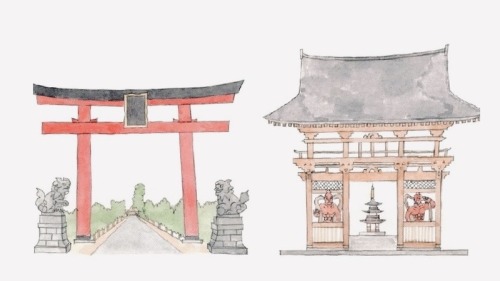
Sean bienvenidos a una nueva publicación en la cual aclararemos las diferencias entre un templo y un santuario japonés dicho esto pónganse cómodos que empezamos. - Seguramente, todos hemos visto alguna vez en fotos templos y santuarios que están por todo el archipiélago nipón y más de una vez nos hemos preguntado: ¿Cuáles son las diferencias entre ellos? - Primero la palabra santuario ¿Qué significa?: Es el lugar en el que los japoneses adoran a todos los kamis por lo cual cada uno tiene el suyo propio, también cabe destacar que puede ser una montaña un lago ect.. Cuando buscamos esta palabra en español, hace referencia a un templo,entonces ¿Cuáles son las principales diferencias? la principal sería que los santuarios sintoístas, disponen de una puerta principal llamada torii a diferencia de los templos budistas, que disponen de una pagoda. Ejemplos de templos budistas por ciudades Templo de Kiyomizu-dera (Kioto) Templo Kinkakuji (Kioto) Templo Senso-ji (Tokio) Templo de Hokokuji (Kamakura) Templo Todai-ji (Nara) Templo de Sanjusangendo (Kioto - Santuarios japoneses por ciudades: Santuario de Ise – Ciudad de Ise Santuario Meiji – Tokio Santuario Itsukushima – Miyajima Santuario Sumiyoshi Taisha – Osaka Santuario Hie Jinja – Tokio Santuario Izumo – Ciudad de Izumo - Para aclarar las dudas, entre un santuario y un templo: También hay que tener en cuenta los distintos nombres y otras de las cosas que caracterizan un templo son las siguientes : Komainu, Temizuya o chōzuya, Salas principales, Amuletos,Komainu, Temizuya el honden y el haiden. En próximos capítulos podemos hablar de cada uno de ellos, aparte de seguir realizando publicaciones de historia, arqueología, geografía entre otros temas de japón os deseo un cordial saludo. - Welcome to a new publication in which we will clarify the differences between a temple and a Japanese sanctuary. That being said, make yourself comfortable and let's get started. - Surely, we have all seen temples and sanctuaries that are all over the Japanese archipelago in photos and more than once we have asked ourselves: What are the differences between them? - First, the word sanctuary What does it mean?: It is the place where the Japanese worship all the kamis, so each one has their own, it is also worth noting that it can be a mountain, a lake, etc. When we look for this word in Spanish, it refers to a temple, so what are the main differences? The main one would be that Shinto shrines have a main door called torii. unlike Buddhist temples, which have a pagoda. Examples of Buddhist temples by city Kiyomizu-dera Temple (Kyoto) Kinkakuji Temple (Kyoto) Senso-ji Temple (Tokyo) Hokokuji Temple (Kamakura) Todai-ji Temple (Nara) Sanjusangendo Temple (Kyoto) Shitennoji Temple (Osaka) - Japanese shrines by cities: Ise Shrine – Ise City Meiji Shrine – Miyajima Sumiyoshi Taisha Shrine – Osaka Fushimi Inari Shrine – Kyoto Hie Jinja Shrine – Tokyo Izumo Shrine – Izumo City - To clarify doubts, between a sanctuary and a temple: We must also take into account the different names and other things that characterize a temple are the following: Komainu, Temizuya or chōzuya, Main rooms, Amulets, Komainu, Temizuya the honden and the haiden. In future chapters we can talk about each of them, apart from continuing to publish publications on history, archaeology, geography, among other topics about Japan, I wish you a cordial greeting. - 寺院と日本の聖域の違いを明確にする新しい出版物へようこそ。そうは言っても、安心して始めましょう。 - 確かに、私たちは皆、日本列島各地にある寺院や聖域を写真で見たことがあり、それらの違いは何だろうかと自問したことが一度や二度ではありません。 - まず、聖域という言葉はどういう意味ですか?: それは日本人がすべての神を崇拝する場所であり、それぞれに独自の神があり、それが山や湖などであることも注目に値します。この単語はスペイン語で寺院を指しますが、主な違いは何でしょうか? 主なものは、神社には鳥居と呼ばれる表扉があることです。 塔のある仏教寺院とは異なります。 都市別の仏教寺院の例 清水寺(京都) 金閣寺(京都) 浅草寺(東京) 報国寺(鎌倉) 東大寺(奈良) 三十三間堂(京都) 四天王寺(大阪) - 都市別の日本の神社: 伊勢神宮 – 伊勢市 明治神宮 – 東京 厳島神社 – 宮島 住吉大社 – 大阪 伏見稲荷大社 – 京都 日枝神社 – 東京 出雲大社 – 出雲市 - 聖域と寺院の間の疑問を解消するには、次のような名前や寺院を特徴付けるその他のものについても考慮する必要があります: 狛犬、手水舎または手水舎、主室、お守り、狛犬、本殿と拝殿。 今後の章では、歴史、考古学、地理、その他日本に関するトピックに関する出版物の発行を続けることに加えて、それぞれのテーマについてお話します。心からご挨拶を申し上げます。
More Posts from Noticiasarquelogicasjaponesas and Others

#history #archaeology #japan #blog #presentation
Sean bienvenidos, a una publicación de presentación, en este blog iremos subiendo contenido de Japón sobre arqueología, historia y cualquier cosita, espero que os guste y nos vemos pronto.
-
Welcome to an introductory post, in this blog we will be uploading content from Japan about archaeology, history and anything else, I hope you like it and see you soon.
-
このブログでは、考古学や歴史など、日本からのコンテンツをアップしていきます。






Sean bienvenidos japonistasarqueológicos, a una nueva entrega de arqueología japonesa, una vez dicho esto pónganse cómodos que empezamos. - Hoy nos trasladamos a las ruinas que se localizan, en la ciudad de Sagamihara, se localiza en la prefectura de Kanagawa, su situación geográfica es la región de Kanto ¿De qué periodo se trata? Se trata del período Jomon, este período estaría dentro del paleolítico. - Las primeras intervenciones arqueológicas se realizaron en 1973 para la construcción de la Ruta 129, se levantaron aproximadamente 18.000 metros cuadrados en el lado este del asentamiento circular, en dicho yacimiento se han descubierto 51 nuevas viviendas en pozos y otros restos y reliquias. - En el emplazamiento se han descubierto 51 nuevas viviendas en pozos y otros restos y reliquias, la vivienda de pozo más grande de la ciudad con un diámetro de 9 m, hay una vivienda con muchas capas de ranuras alrededor del perímetro, y se explica que ha sido reconstruida y utilizada durante varias generaciones. - 日本の考古学者たちよ、ようこそ。そう言われたら、くつろいで、さっそく始めましょう。 - 今日は神奈川県相模原市にある遺跡を紹介します。 時代は?縄文時代です。この時代は旧石器時代にあたります。 - 1973年に国道129号線建設のために初めて考古学的発掘調査が行われ、円形集落の東側で約18,000平方メートルが発掘された。遺跡からは、ピット内の51の新しい住居やその他の遺跡や遺物が発見された。 - 敷地内では新たに51基の竪穴式住居やその他の遺跡・遺物が発見され、市内最大の直径9mの竪穴式住居には、周囲に何層もの溝を持つ住居があり、数世代にわたって改築・使用されてきたことが説明されています。 - 気に入っていただけたなら幸いです。今後の記事でお会いしましょう。良い一週間をお過ごしください。 -
Welcome to Japanesearchaeology, to a new installment of Japanese archaeology. Having said that, make yourself comfortable and let's begin.
-
Today we move to the ruins that are located in the city of Sagamihara, located in the Kanagawa prefecture, its geographical location is the Kanto region. What period is it? This is the Jomon period, this period would be within the Paleolithic.
-
The first archaeological interventions were carried out in 1973 for the construction of Route 129, approximately 18,000 square meters were built on the east side of the circular settlement, at this site 51 new homes have been discovered in wells and other remains and relics.
- 51 new well dwellings and other remains and relics have been discovered at the site, the largest well dwelling in the city with a diameter of 9 m, there is a dwelling with many layers of grooves around the perimeter, and it is explained that it has been rebuilt and used for several generations.




Sean bienvenidos , arqueojaponólogos; quiero hacer un llamamiento: en Instagram abundan cuentas así como la de la foto que usan Wikipedia sin rigor cientifista y lo peor es que hay gente incrédula, o no sé cómo llamarlos para suavizarlo. Hay que ser crítico con lo que se lee en internet. Si de verdad quieren aprender sobre algo, hay que leer hasta un máximo de 10 fuentes, incluso más, y después contrastar la información que leemos. Las fotos son una cosa aparte, pero también hay que tener cuidado con el material que se usa; yo me tiro días en publicar el contenido que ven en esta cuenta. Además, las fotos son dos recursos muy buenos para detectar el plagio y lo siento mucho por esa cuenta y todas las cuentas que son similares; si las ven, denuncien o bloqueen, no son de fiar, son cuentas que desinforman, además de la poca originalidad. - Hay fuentes más confiables que Wikipedia, como Google Scholar y Academia.edu, por poner unos ejemplos. Si todos unimos fuerzas, podremos eliminar de internet este tipo de gente y su contenido que solo sabe desinformar . - Que pasen una buena semana y nos vemos en próximas publicaciones . ¡Feliz año 2025! - ようこそ、日本考古学者の皆さん。訴えたいのですが、インスタグラムには写真のようなアカウントが科学的厳密性なしにウィキペディアを利用しているアカウントがたくさんありますが、最悪なのは信じられない人がいるということです。あるいは、彼らを何と呼んで和らげたらいいのかわかりません。インターネットで読むものには批判的でなければなりません。何かについて本当に知りたい場合は、最大 10 個の情報源、さらにそれ以上の情報源を読み、読んだ情報を比較する必要があります。写真は別のものですが、使用される素材にも注意する必要があります。私はこのアカウントでご覧いただくコンテンツを何日もかけて公開しています。また、写真は盗作を検出するための非常に優れたリソースであり、そのアカウントと同様のすべてのアカウントについて非常に申し訳ありません。それらを見かけたり、報告したり、ブロックしたりした場合、それらは信頼できず、オリジナリティの欠如に加えて、誤った情報を提供するアカウントです。 - いくつかの例を挙げると、Google Scholar や Academia.edu など、Wikipedia よりも信頼できる情報源があります。私たち全員が力を合わせれば、誤った情報を伝えることしか知らないこの種の人々とそのコンテンツをインターネットから排除することができます。 - 良い一週間をお過ごしください。また今後の投稿でお会いしましょう。 2025 年明けましておめでとうございます! - Welcome, archaeojapanologists; I want to make an appeal: on Instagram there are plenty of accounts like the one in the photo that use Wikipedia without scientific rigor and the worst thing is that there are people who are incredulous, or I don't know what to call them to soften it. You have to be critical of what you read on the Internet. If you really want to learn about something, you have to read up to a maximum of 10 sources, even more, and then compare the information you read. Photos are a separate thing, but you also have to be careful with the material you use; I spend days publishing the content you see on this account. Also, photos are two very good resources to detect plagiarism and I am very sorry for that account and all the accounts that are similar; if you see them, report or block them, they are not trustworthy, they are accounts that misinform, in addition to the lack of originality. - There are more reliable sources than Wikipedia, such as Google Scholar and Academia.edu, to give a few examples. If we all join forces, we can eliminate these types of people and their content that only knows how to spread misinformation from the Internet. - Have a good week and see you in future posts. Happy New Year 2025!


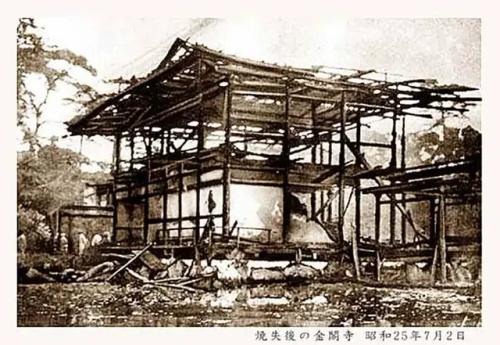
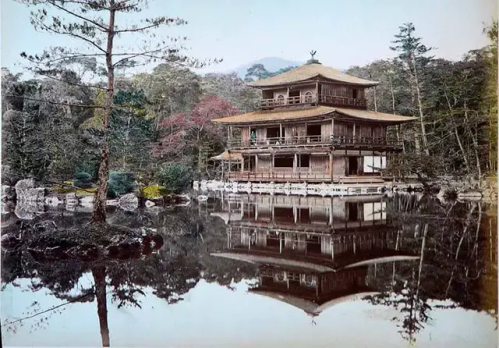



Sean bienvenidos, japonistasarqueologos, a una nueva entrega, cultural-artística vamos a hablar sobre Kinkaku-ji una vez dicho esto pónganse cómodos que empezamos. - El kinkaku-ji se localiza en la ciudad de Kyoto, en la prefectura de kansai. Kyoto fue una de las dos grandes capitales del Japón feudal porque su otra ciudad de gran peso fue Nara, pero eso es otra historia. - El Kinkaku-ji, fue construido en el siglo XIV, el que se ve actualmente es una reconstrucción porque el original se destruyó en un incendio en 1950 y el actual data de 1980 aproximadamente ya en 1880 perdió su revestimiento de pan de oro, fue La residencia de Ashikaga yoshimitsu tras su muerte lo donó a la orden religiosa y pasó a ser un templo budista. - Espero que os guste y nos vemos en próximas publicaciones. Fuentes de foto: https://blogukiyoe.es/kinkaku-ji-en-el-ukiyo-e wikipedia - Welcome, Japanese archaeologists, to a new cultural-artistic installment, we are going to talk about Kinkaku-ji. Once that has been said, make yourself comfortable and we will begin. - Kinkaku-ji is located in the city of Kyoto, kansai prefecture. Kyoto was one of the two great capitals of feudal Japan because its other major city was Nara, but that is another story. - The Kinkaku-ji was built in the 14th century, the one currently seen is a reconstruction because the original was destroyed in a fire in 1950 and the current one dates from approximately 1980 and in 1880 it lost its gold leaf coating, it was La residence of Ashikaga Yoshimitsu after his death he donated it to the religious order and it became a Buddhist temple. - I hope you like it and see you in future posts. Photo sources: https://blogukiyoe.es/kinkaku-ji-en-el-ukiyo-e Wikipedia - 日本の考古学者の皆さん、新しい文化芸術の回へようこそ。金閣寺についてお話します。それが終わったら、落ち着いてから始めましょう。 - 金閣寺は関西県京都市にあります。京都は、もう一つの主要都市が奈良であったため、封建時代の日本の二大首都の一つでしたが、それはまた別の話です。 - 金閣寺は 14 世紀に建てられ、現在見られるものは再建されたものです。オリジナルは 1950 年の火災で焼失し、現在のものは 1980 年頃のもので、1880 年に金箔のコーティングが失われ、ラ邸でした。足利義満の死後、教団に寄進され仏教寺院となった。 - 気に入っていただければ幸いです。今後の投稿でお会いしましょう。 写真出典: https://blogukiyoe.es/kinkaku-ji-en-el-ukiyo-e ウィキペディア


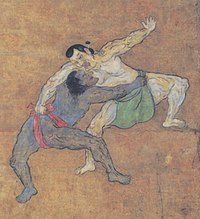
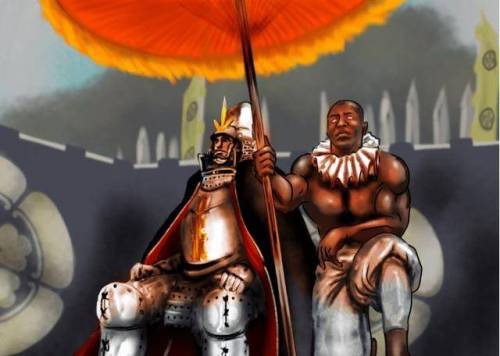
Sean bienvenidos japonistasarqueologos, a una nueva entrega de historia nipona una vez dicho esto pónganse cómodos que empezamos.
-
Hace no mucho salió un nuevo Assassin's Creed Shadows, Yazuke (やすけ) nacido posiblemente en mozambique aunque dependiendo de la fuente lo podéis encontrar que proviene de Madagascar o de otras partes de África no está muy claro su fecha de nacimiento, pero se sabe que existió en el siglo XVI fue un esclavo bajo el amparo de los jesuitas llegando a Japón y cuando Oda Nobunaga, lo vio se quedó impregnado de él mandó lavarlo porque nunca habían visto a un africano.
-
Cabe destacar que a Nobunaga le llamaban el loco, ya que le gustó a la opulencia de última hora en lo que respecta a la moda de la época básicamente lo tendría para fallar mira lo que tengo y tú no tienes. Aquí viene las disputas de sí no fue samurái, las fuentes niponas y la fuente en general de la época hablan de que le dio ciertos cargos posiblemente para llamar la atención y generar cierto revuelo no se sabe muy bien cuando murió.
-
Actualmente, en el país naciente esto está generando un gran revuelo. ¿Qué opinan al respecto?
-
日本の考古学者たちよ、ようこそ、日本史の新連載へ!さあ、くつろいで、始めよう。
-
少し前に、新しいアサシン クリード シャドウズ、ヤズケ(やすけ)おそらくモザンビークで生まれたが、ソースによっては、マダガスカルやアフリカの他の部分から来ているそれを見つけることができますが、彼の生年月日は非常に明確ではないが、それは 16 世紀に存在していたことが知られているイエズス会の保護の下で奴隷だった日本に来るし、織田信長、それを見たとき、彼と孕んでいた彼らはアフリカ人を見たことがないのでそれを洗浄するように命じた。
-
信長が狂人と呼ばれたのは特筆に値する。当時のファッションを見る限り、信長は後世の豪華さを好んでいた。日本側の資料や当時の一般的な資料には、信長が注目を集め、騒ぎを起こすために、信長にある地位を与えたと書かれているが、信長がいつ死んだのかは定かではない。
-
これは現在日本で大きな波紋を呼んでいるが、あなたはどう思うだろうか?
-
Welcome, Japanese archaeologists, to a new installment of Japanese history, so make yourselves comfortable and let's get started.
-
Not long ago came out a new Assassin's Creed Shadows, Yazuke (やすけ) born possibly in mozambique although depending on the source you can find it that comes from Madagascar or other parts of Africa is not very clear his date of birth, but it is known that existed in the sixteenth century was a slave under the protection of the Jesuits coming to Japan and when Oda Nobunaga, saw it was impregnated with him ordered to wash it because they had never seen an African.
-
It is worth noting that Nobunaga was called the madman, as he liked the latter-day opulence as far as the fashion of the time was concerned basically he would have it to fail look what I have and you don't have. Here comes the disputes of yes he was not a samurai, the Japanese sources and the general source of the time talk about him giving him certain positions possibly to draw attention and generate some commotion is not quite sure when he died.
-
This is currently causing quite a stir in Japan, what do you think about it?





Sean bienvenidos japonsistasarqueológicos, a una nueva entrega cultural en esta ocasión os voy comentar la festividad, del día del niño que se celebra cada 5 de Mayo que se llama Kodomo no Hi y se escribiríaこどもの日 una vez dicho esto pónganse cómodos que empezamos. - ¿Cuándo surgió el día del niño?La festividad, surge en el siglo VIII d.c en lo que respondería al periodo Heian, posiblemente tendría influencia de china al respecto ya que se basó en Tango no Sekku. El Sekku se basa en los puntos de inflexión de las estaciones y se basa en la teoría de los cinco elementos del yin y el yang en China. - La forma tradicional de celebrarlo es ofrecer ofrendas estacionales a los dioses, rezar y comer juntos los productos de segunda mano.En el período Kamakura, en pleno auge de los samurais, se convirtió en un evento importante para orar por el crecimiento y la salud de los niños y la prosperidad de la familia, con adornos como armaduras, cascos, serpentinas de carpa y muñecos festivos. - Ahora a continuación mencionaré algunos dulces de los que se suelen comer el 5 de Mayo: Kashiwa mochi,Chimaki, beko mochi, akumaki , pastel no koi. - Espero que os haya gustado y nos vemos en próximas publicaciones y que pasen un feliz día del niño.
-
今回は、毎年5月5日に行われる「こどもの日」というお祭りについてお話しします。「こどもの日」とは、「こどもの日」と書いて「こどもの日」と読みます。 - こどもの日」の起源は、紀元8世紀の平安時代にさかのぼりますが、「端午の節句」が元になっていることから、中国の影響を受けている可能性があります。節句とは、季節の変わり目を表すもので、中国の陰陽五行説に基づくものです。 - 季節のお供え物を神に捧げ、祈り、中古品をみんなで食べるのが伝統的な祝い方です。 武士ブーム真っ只中の鎌倉時代には、甲冑や兜、こいのぼり、祝い人形などを飾り、子供の成長や健康、家族の繁栄を祈る大切な行事となりました。 - 柏餅、ちまき、べこ餅、あくまき、こいのぼりのお菓子です。 - 気に入っていただけたなら幸いです。今後の記事でお会いしましょう。そして、楽しい子供の日をお過ごしください。
-
Welcome to a new cultural delivery in this occasion I am going to comment on the festivity, the day of the child that is celebrated every 5th of May that is called Kodomo no Hi and it would be writtenこどもの日 once said this make yourselves comfortable that we begin. - When did Children's Day come about? The holiday, which dates back to the 8th century AD in what would be the Heian period, was possibly influenced by Chinese in this respect as it was based on Tango no Sekku. Sekku is based on the turning points of the seasons and is based on the five element theory of yin and yang in China. - The traditional way to celebrate it is to offer seasonal offerings to the gods, pray and eat second-hand goods together. In the Kamakura period, at the height of the samurai boom, it became an important event to pray for the growth and health of children and the prosperity of the family, with decorations such as armour, helmets, carp streamers and festive dolls. - Now here are some of the sweets usually eaten on May 5th: Kashiwa mochi, Chimaki, beko mochi, akumaki, no koi cake. - I hope you liked it and see you in future posts and have a happy children's day.




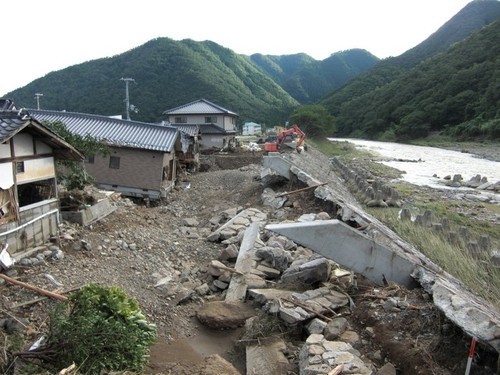
Sean bienvenidos, japonistasarqueológicos a una nueva entrega, en esta ocasión hablaré sobre actualidad nipona, una vez dicho esto pónganse cómodos que empezamos. — El domingo 16 de julio, azotaron fuertes lluvias al archipiélago nipón y hace no mucho el tifón Lan paralizó el tráfico aéreo de Japón y dejó miles de evacuados al oeste, además sin electricidad. Pero en este caso se han anegado muchas zonas del norte, causando efectos geográficos catastróficos y causando evacuaciones, etc. Por ejemplo: La ciudad de Akita registró precipitaciones, fue un récord, más de 250 milímetros durante un período de 48 horas, todo un hito histórico. — Espero que os guste y nos vemos en próximas publicaciones, que pasen una buena semana. - Welcome, Japanese archaeologists, to a new installment, this time I will be talking about Japanese current affairs, and once that is said, make yourselves comfortable and let's get started. - On Sunday 16th July, heavy rains hit the Japanese archipelago and not long ago Typhoon Lan paralysed Japan's air traffic and left thousands of evacuees in the west without electricity. But in this case many areas in the north have been flooded, causing catastrophic geographical effects and causing evacuations, etc. For example: The city of Akita recorded record rainfall of more than 250 millimetres over a 48-hour period, a historic milestone. - I hope you like it and see you in future posts, have a good week. - 日本の考古学者たちよ、新しい回へようこそ。今回は日本の時事問題についてお話しします。そう言ったら、くつろいで、始めましょう。 - 7月16日の日曜日、日本列島は大雨に見舞われ、少し前には台風12号が日本の空の便を麻痺させ、西日本では何千人もの避難者が停電に見舞われた。しかし今回は、北部の多くの地域が浸水し、地理的に壊滅的な影響を引き起こし、避難などを余儀なくされている。例えば:秋田市では、48時間に250ミリ以上の記録的な雨量を記録し、歴史的な出来事となった。 - お気に召していただけたなら幸いである.




Sean bienvenidos, japonistasarqueologicos, al tercer capítulo del Japón prehistórico y seguir recorriendo sus lugares mitológicos y mágicos, una vez dicho esto póngase comandos que empezamos. - Para continuar nuestro viaje, más vale tarde que nunca, pero despacio y con buena letra. Nos trasladamos al yacimiento arqueológico de Sannai Maruyama en la prefectura de Aomori, localizada en la región de Tōhoku. - La estructura, de madera, data del periodo jomon, es una estructura que funcionó como un gran calendario, ya que algo común que tienen todas las culturas en el mundo es adorar a las estrellas en lo que respecta a la prehistoria. El yacimiento data del 3900 a.c localizado a lo largo del río Okidate en la punta de una suave colina que se extiende desde las montañas Hakkoda. - En la década de 1992, tuvieron lugar las excavaciones que han desenterrado los restos de viviendas en pozos, tumbas de adultos, niños y los pozos de almacenamiento, entre otros rastros de la vida cotidiana. Además de una hay una gran cantidad de herramientas de loza de piedra. Se han excavado una gran variedad de huesos de pescado y de animales que indican hábitos alimenticios de aquella gente, también fueron encontrados frutos secos: como castañas y nueces. Además, se han desenterrado muchas reliquias orgánicas, como productos de madera, herramientas de hueso, canastas tejidas, así como artículos comerciales como jade, obsidiana de áreas remotas y asfalto. Hay una teoría: en Iwate se crean estructuras similares para realizar la danza de los ciervos ¿Qué opinan al respecto? _ Espero que os haya gustado y nos vemos en próximas publicaciones mis amantes del mundo japonés, que pasen una buena semana. - 考古学者の日本主義者の皆さん、先史時代の日本の第 3 章へようこそ、神話と魔法の場所を旅し続けてください。 - 旅を続けるには、遅刻しないよりはマシですが、ゆっくりと上手な字で。 東北地方にある青森県の三内丸山遺跡へ移動します。 - この木造建造物は縄文時代にまで遡り、先史時代から世界のどの文化にも共通して星を崇拝しており、偉大な暦として機能していた建造物です。 この遺跡は、八甲田山系から続くなだらかな丘陵の先端、沖館川沿いに位置し、紀元前 3900 年に遡ります。 - 1992 年代に発掘調査が行われ、井戸内の住居跡、大人、子供の墓、貯蔵穴、その他の日常生活の痕跡が発掘されました。 1 つ以外にも多数の石器の道具があります。 当時の人々の食生活を示す魚や動物の骨が多数出土しており、栗やクルミなどの木の実も出土しています。 さらに、木製品、骨道具、編んだかごなどの有機遺物や、翡翠、辺境の黒曜石、アスファルトなどの交易品も発掘されています。 岩手でも鹿踊りをするために同じような建物が作られているという説がありますが、どう思いますか? _ 日本の世界を愛する皆さん、良い一週間をお過ごしください。 - Welcome, archaeological Japanists, to the third chapter of prehistoric Japan and continue touring its mythological and magical places. Having said that, put yourself in command and let's begin. - To continue our journey, better late than never, but slowly and with good handwriting. We move to the Sannai Maruyama archaeological site in Aomori prefecture, located in the Tōhoku region. - The wooden structure dates back to the Jomon period, it is a structure that functioned as a great calendar, since something common that all cultures in the world have is worshiping the stars in regards to prehistory. The site dates back to 3900 BC located along the Okidate River at the tip of a gentle hill that extends from the Hakkoda Mountains. - In the 1992s, excavations took place that unearthed the remains of dwellings in wells, graves of adults, children and storage pits, among other traces of daily life. In addition to one there are a large number of stoneware tools. A wide variety of fish and animal bones have been excavated that indicate the eating habits of those people. Nuts such as chestnuts and walnuts were also found. In addition, many organic relics have been unearthed, such as wooden products, bone tools, woven baskets, as well as trade items such as jade, obsidian from remote areas, and asphalt. There is a theory: in Iwate similar structures are created to perform the deer dance. What do you think about it? _ I hope you liked it and see you in future posts my lovers of the Japanese world, have a good week.




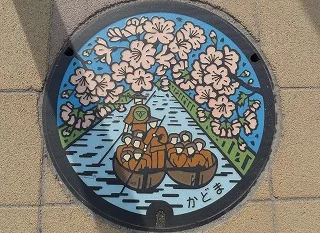
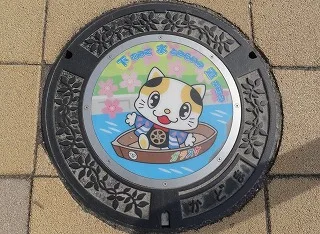

Sean bienvenidos japonistasarqueologos, a una nueva entrega en la cual os expondré una serie de fotos de tapas de alcantarilla japonesas. - Seguramente muchos os preguntaréis que tienen de especial porque están en todo el mundo civilizado, pero cada país tiene su estilo propio como en: Finlandia, entre otros muchos. - Pero Japón vive en el año 2050, seguramente que han escuchado esta expresión muchas veces y la verdad es que esto es una prueba de que Japón coge las cosas y las mejora a niveles planetarios. ¿Conocían esto? ¿Qué opinan? Os leo encantado. - Espero que os haya gustado y nos vemos en próximas publicaciones que pasen una buena semana. - 日本の考古学者の皆さん、日本のマンホールの蓋の写真を紹介する新連載へようこそ。 - マンホールの蓋は文明国中どこにでもあるが、国によって独自のスタイルがある:フィンランド、その他多数。 - しかし、日本は2050年に生きている。きっと、この表現を何度も耳にしたことがあるだろうが、真実は、日本が物事を捉え、惑星レベルまで改善している証拠なのだ。 あなたはこのことをご存知でしたか?私はそれを読んで喜んでいる。 - 今後の記事でお会いできることを楽しみにしています。 - Welcome Japanese archaeologists, to a new installment in which I will show you a series of photos of Japanese manhole covers. - Surely many of you will wonder what is so special about them because they are all over the civilized world, but each country has its own style as in: Finland, among many others. - But Japan is living in the year 2050, surely you have heard this expression many times and the truth is that this is proof that Japan takes things and improves them to planetary levels. Did you know this, what do you think? I am delighted to read it. - I hope you liked it and see you in future posts have a nice week.
-
 garalord liked this · 3 months ago
garalord liked this · 3 months ago -
 junian5522 liked this · 6 months ago
junian5522 liked this · 6 months ago -
 drusil-88 liked this · 8 months ago
drusil-88 liked this · 8 months ago -
 northameicanblog liked this · 9 months ago
northameicanblog liked this · 9 months ago -
 rorydbe liked this · 9 months ago
rorydbe liked this · 9 months ago -
 margocooper liked this · 10 months ago
margocooper liked this · 10 months ago -
 christabelq liked this · 10 months ago
christabelq liked this · 10 months ago -
 repera23 liked this · 10 months ago
repera23 liked this · 10 months ago -
 babylon-iraq-baghdad liked this · 10 months ago
babylon-iraq-baghdad liked this · 10 months ago -
 vivencias-del-alma liked this · 10 months ago
vivencias-del-alma liked this · 10 months ago -
 ted-blogs-blog liked this · 10 months ago
ted-blogs-blog liked this · 10 months ago -
 waiting-eyez liked this · 10 months ago
waiting-eyez liked this · 10 months ago -
 rodolfo9999 liked this · 10 months ago
rodolfo9999 liked this · 10 months ago -
 curiokhan0113 liked this · 10 months ago
curiokhan0113 liked this · 10 months ago -
 bear-pattern-hamster liked this · 10 months ago
bear-pattern-hamster liked this · 10 months ago -
 adam-trademark liked this · 10 months ago
adam-trademark liked this · 10 months ago -
 zanjuanico liked this · 10 months ago
zanjuanico liked this · 10 months ago -
 emaadsidiki liked this · 10 months ago
emaadsidiki liked this · 10 months ago -
 hiromusicarts-blog liked this · 10 months ago
hiromusicarts-blog liked this · 10 months ago -
 u-nobu liked this · 10 months ago
u-nobu liked this · 10 months ago -
 huseyinoktensblog liked this · 10 months ago
huseyinoktensblog liked this · 10 months ago -
 dgfmaurizio liked this · 10 months ago
dgfmaurizio liked this · 10 months ago -
 takanaminato liked this · 10 months ago
takanaminato liked this · 10 months ago -
 sicks93 liked this · 10 months ago
sicks93 liked this · 10 months ago -
 julcecar reblogged this · 10 months ago
julcecar reblogged this · 10 months ago -
 julcecar liked this · 10 months ago
julcecar liked this · 10 months ago -
 vestaignis liked this · 10 months ago
vestaignis liked this · 10 months ago -
 noticiasarquelogicasjaponesas reblogged this · 10 months ago
noticiasarquelogicasjaponesas reblogged this · 10 months ago

238 posts









